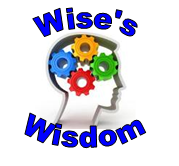How to Maximize Student Learning
Check out this video produced by the National Association of School Teachers of Youth. Narrated by the "adolescent brain," this (sometimes cheesy) video offers some important reminders on the conditions needed for learning to truly take place. The brain says learning happens if:
- I feel OK
- It matters
- It stretches me
- I have a coach
- I have to use it
- I think back on it
- I plan my next steps
It's worth the six minutes to watch. As you're viewing, think about how many of the seven characteristics can be applied.
The 7 Habits of Highly Effective Teachers Using Technology
I came across this infographic recently, and I thought it fit perfectly with many of the great things going on in the Hilliard City Schools. Obviously, the fact that 7 characteristics are highlighted ties nicely in to our 7's, but more importantly the following characteristics really stood out to me:
- They always start with the why
- They embrace change
- They actively care
Common Core: Solve Math Problems
This week's article, Common Core: Solve Math Problems, outlines a model for classroom mathematical assessment that distinguishes the student's procedural accuracy from his/her conceptual understanding. Education professor and author, John Tapper, calls the tool 'concrete-representational-abstract assessments, or CRA' and says, "It’s easy to do, and it provides a sophisticated portrait of kids’ models for mathematical concepts." In addition, the assessment framework builds reasoning skills and could be replicated at any grade-level. Teachers benefit from using a similar model in their math classrooms by "exploring what students understand, where they are struggling, and most important, why they are struggling."
He describes the assessment steps as follows: provide a rich problem for students to consider, then ask students to represent the problem's solution in three different ways at stations: concretely (physical items, Unifix cubes, place value blocks), representationally (drawings, charts, tables) , and abstractly (equations). As students solve the problem, teachers observe, question, and listen as students explain their thinking. The information gained during observation is formative assessment data. It will be used to guide instructional 'next steps' by the teacher, such as small-group assignments for reteaching.
The Most Powerful Educational Disrupter
I just returned from the Learning Forward Conference, where I had the opportunity to talk with professionals across the world about the ways they are moving educators and education forward in their respective parts of the globe. Scott Rocco reminds us that the most powerful educational disrupter is the educator, himself or herself. The educator can create a mountain of change, engage large groups, explore the virtual world, design and seamlessly integrate powerful learning, and richly reward self and others by moving both classroom learning and professional learning forward.
The landscape of education is constantly changing, and educators are the ones who have the power to continue morphing it. Rocco shares five ways to become the greatest educational disrupter. While attending the conference, I sought ways to evolve the delivery of professional learning experiences. I came home rejuvenated and ready to move forward, not forgetting that transformation begins with the educator.
Changing the Culture, One Teacher at a Time
This week my article focuses on changing the culture of a school through the lens of technology use. Too often educators believe that technology will fix it all. Fix poor teaching, fix poor content, and fix poor scores. Educators dump thousands of dollars worth of iPad's into a culture that doesn't understand how to use it and what do you have? A lot of happy teachers and continued poor instruction. This article focuses on a model I believe is one that all educators can learn from. Instead of focusing on the large problem and thinking we can fix it with large amounts of technology, the author says we should focus on those that are ready to utilize the technology and change the culture one by one. It's tough to do in the instant gratification culture we live in, but as you read you'll see the long term impact of this one by one approach gives the outcomes we are all searching for. What if we all identified a small group of core teachers that would be our technology culture shifters? Interesting thoughts. Enjoy.






No comments:
Post a Comment